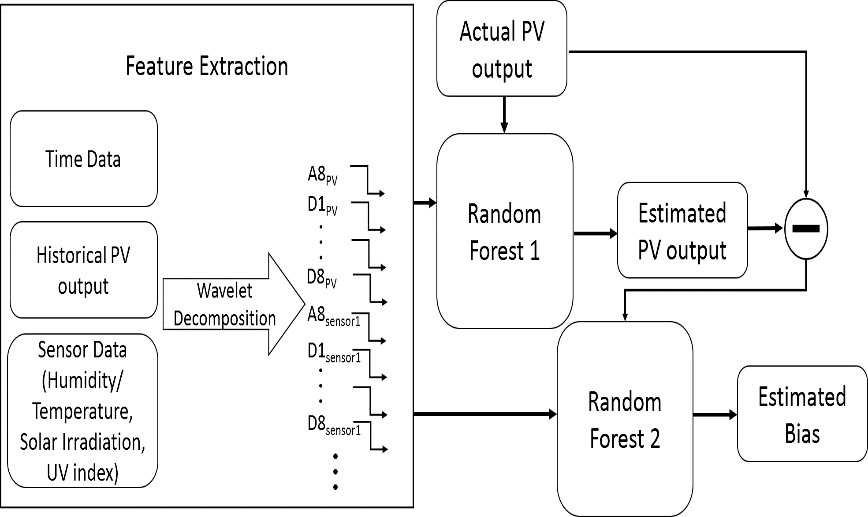Forecasting of Solar PV Generation using Artificial Intelligence
The use of solar photovoltaic (PV) power is a promising solution to reduce grid power consumption and carbon dioxide emissions. However, the benefit of utilizing solar PV power is limited by its highly intermittent and unreliable nature. The non-stationary and non-linear characteristic of solar irradiance makes solar PV difficult to predict by traditional time series and artificial intelligence (AI) approaches. To address the above challenges, we propose a novel technique integrating stationary wavelet transform(SWT) and random forest models. Instead of conventional decompose-and-reconstruct process in SWT, we only apply the wavelet decomposition to extract the information from raw data with better time-frequency resolutions. We also propose a bias-compensation technique to minimize the prediction error. Our experimental results using sensors data from the on-campus microgrid demonstrate the proposed approach is robust to different forecast time horizons and has smaller prediction error.
Wavelet Decomposition
To extract the true underlying variation in PV power, we use the stationary wavelet transform taking advantage of its multiresolution structure. Though Fourier analysis is a traditional tool for the analysis of global frequencies present in the signal, it lacks temporal resolution when dealing with non-stationary process. Some frequency resolution in Fourier analysis can be exchanged to get better time resolution, which can be performed by defining short duration waves called mother wavelet functions so that the given signal for analysis is projected on this basis function. Wavelet decomposition provides a convenient way for separating the true underlying trend in signals from the spurious short fluctuations.

Block diagram of proposed Wavelet-BCRF
.png)
Actual PV power output and 6-hours ahead predicted PV power output on November 15 - 18, 2015
Associated Publications
